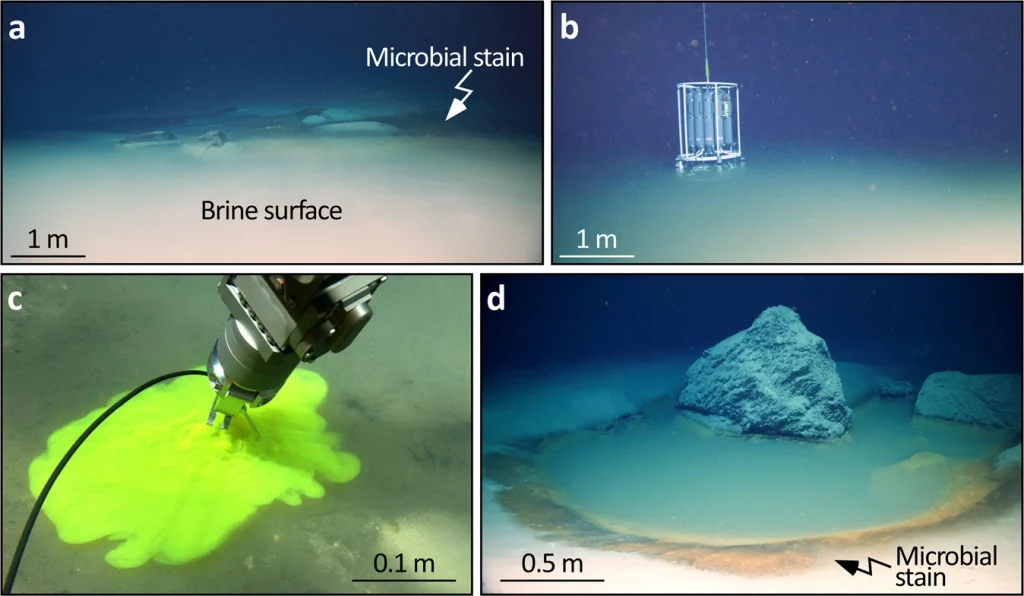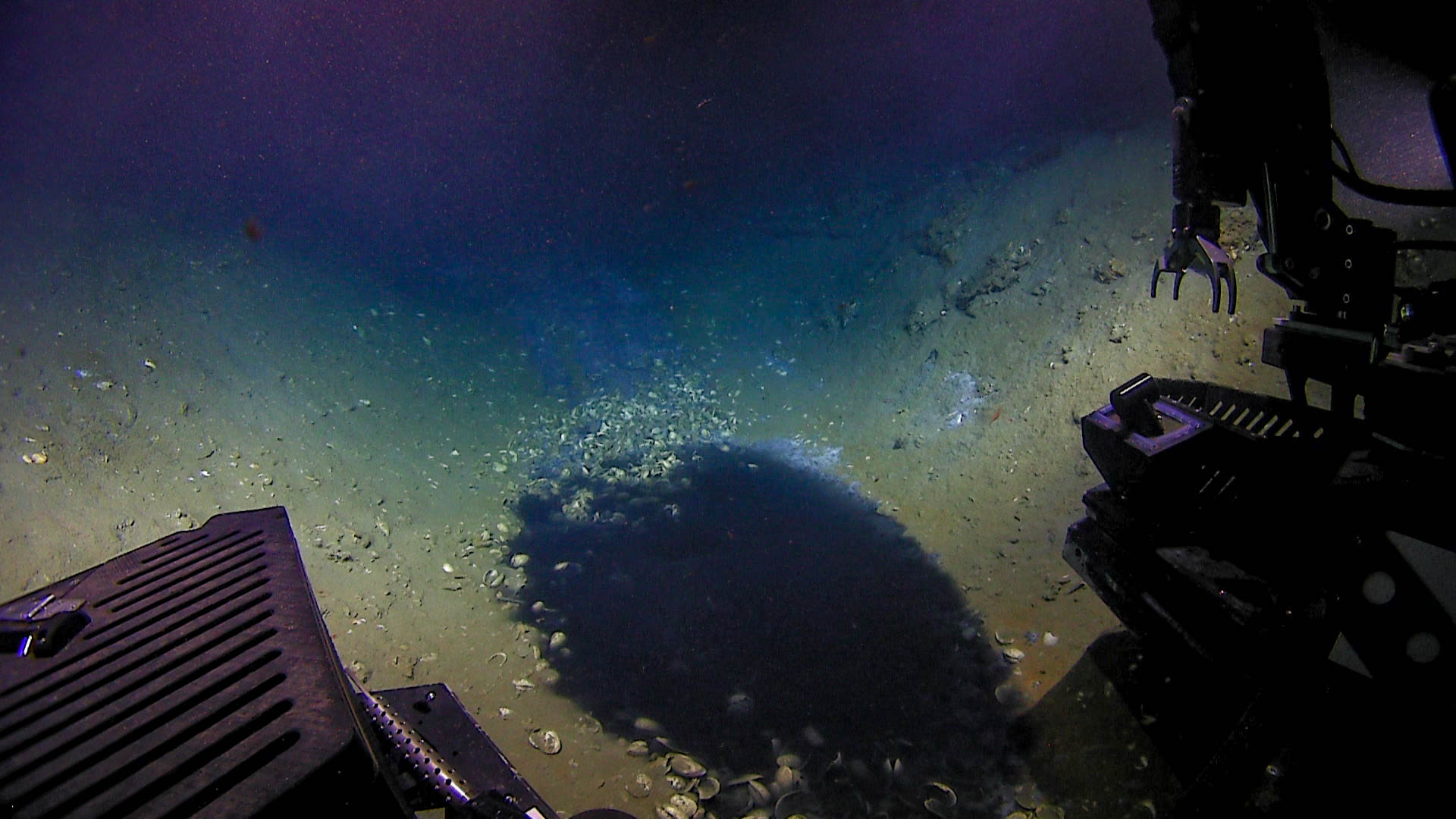Featured image: ROV Deep Discoverer approaching a brine pool in the Gulf of Mexico (2018). NOAA Office of Ocean Exploration and Research (Public domain)
Paper: Discovery of the deep-sea NEOM Brine Pools in the Gulf of Aqaba, Red Sea
Authors: Sam J. Purkis, Hannah Shernisky, Peter K. Swart, Arash Sharifi, Amanda Oehlert, Fabio Marchese, Francesca Benzoni, Giovanni Chimienti, Gaëlle Duchâtellier, James Klaus, Gregor P. Eberli, Larry Peterson, Andrew Craig, Mattie Rodrigue, Jürgen Titschack, Graham Kolodziej, Ameer Abdulla
Today, scientists are turning to extreme ecosystems on Earth to understand how life evolved on Earth and how life might be on other planets. One such alien place exists in the darkness of the ocean. It’s an extreme ecosystem where even fish think twice before entering. Brine pools are well known for being ‘death traps’ – extremely toxic, and any organism (with a few exceptions) that swims into them dies instantly. They are lakes of hypersaline water present on the ocean floor that are so dense that Remotely Operated Submersible Vehicles (ROVs) float on them!
Such anoxic (oxygen-free) brines are found mainly in the Red Sea, the Mediterranean Sea and the Gulf of Mexico. These basins were once shallow seas which were cut off from the oceans. The seawater that got trapped inside the basins evaporated and formed salt deposits. As time passed, these salt deposits were covered by sediments and got buried underneath them. Afterwards, when the basins reconnected to the oceans, seawater penetrated the cracks in the sediments and dissolved the salt deposits underneath, forming brine. Very few brine pools have been encountered in these basins. Most of them are located in the Red Sea.
Earlier, the offshoot of the Red Sea, the Gulf of Aqaba, hadn’t been explored for brine pools. Purkis and his colleagues, who were exploring the continental shelf (submerged edge of the continents) off the coast of Saudi Arabia for brine pools, discovered a unique pool system located in a depression that was 1770m deep. They named the pools NEOM brine pools after the NEOM Saudi development company that was facilitating their research cruise. This was the first time a brine pool system was discovered outside the Red Sea proper.

So, what makes the NEOM brine pools special? Most of the sediments from the interiors of continents and coastal regions end up in the oceans. But after deposition on the ocean floor, they get altered due to chemical reactions with seawater or get disturbed due to biological activities like burrowing. This makes it difficult for scientists to analyze them and reconstruct past events accurately. The oxygen-deficient environment, free from biological disturbances, offered by brine pools, is perfect for the preservation of sediments. Until now, most of the pools discovered were far away in the deep sea, where terrestrial sediments hardly reach. The location of NEOM brine pools makes them special. Their proximity to the coast enables them to trap sediments effectively. Additionally, the dense brine protects the deposited sediments from incoming underwater currents. Purkis and his colleagues found sediments from the main NEOM pool that represent at least 1200 years of Earth’s history!
The sediments retrieved include material deposited by underwater currents (turbidites), tsunamis, and coastal flash floods caused by sudden heavy rainfall. These sediment stacks were further analyzed to reconstruct past events like tsunamis or earthquakes that deposited or distorted them. Purkis et al. identified three warped intervals in the sediment core caused by seismic disturbances in the past. The cyclicity in the sediment records is very helpful in predicting future seismic events.
The discovery has also changed the understanding of how brine pools form in different marine settings. From the search for extraterrestrial life to decoding the earth’s past; brine pools hold answers to many unknowns.
Brine pools: Geological time capsules by Amber Saraf is licensed under a Creative Commons Attribution-ShareAlike 4.0 International License.

